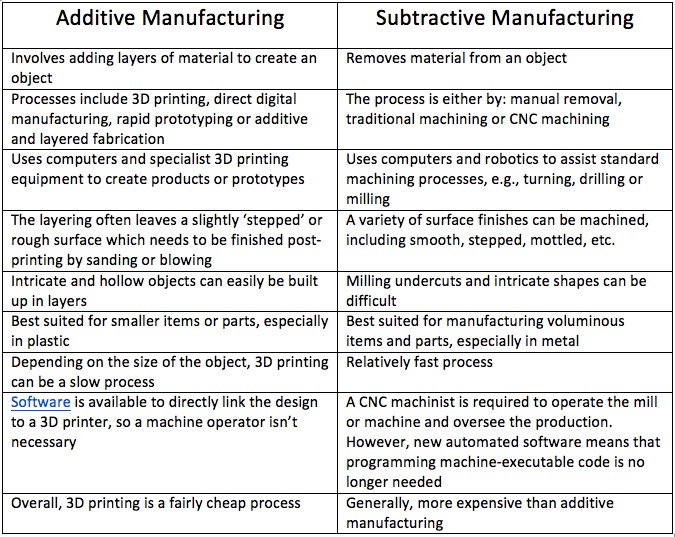
Both additive and subtractive manufacturing have revolutionized the way products, parts and prototypes are made. Additive and subtractive manufacturing technologies are advancing rapidly, with companies such as Autodesk at the cutting edge of providing tools to integrate seamlessly with the fabrication process.
Additive manufacturing is a process that adds successive layers of material to create an object, often referred to as 3D printing. Subtractive manufacturing, as the name suggests, is the opposite.
Rather than adding layers, subtractive manufacturing involves removing sections of a material by machining or cutting it away. It can be carried out manually or, more commonly, by a process known as Computer Numerical Control (CNC) machining.
This article will give a detailed overview of the main differences between additive and subtractive manufacturing, as well as the pros and cons and main applications of each.
Additive vs. subtractive manufacturing comparisons
There are several fundamental differences between additive and subtractive manufacturing in both the processes and the end results. This table will directly compare both techniques.

Applications of additive and subtractive manufacturing
As well as the differences listed above, there are some similarities. For example, they are both widely used in the fabrication of prototypes.
Both additive and subtractive manufacturing expedite the prototyping process. The main consideration is the volume and type of material and the effect this will have on the speed of fabrication. A large object that has a high volume, a large metal cog, for example, lends itself more to subtractive manufacturing. A small plastic part, such as a bracket, might be more suited to 3D printing.
Producing finished products
CNC machining is still the favored method for most manufacturers looking to fabricate finished products. The main reasons are the speed of the process, the choice of surface finishes and the fact it is better suited to high-volume production.
Additive manufacturing is normally reserved for highly specialist parts that will require only a small production run, such as small aerospace engine parts. Also, highly complex and intricate items, especially those that require a hollow interior (in order to save weight or material), are usually 3D printed.
Hybrid additive and subtractive manufacturing
Hybrid systems combine the versatility of additive manufacturing with some of the advantages of subtractive methods. Specialist machines can perform both operations, meaning that complex parts can be made more easily. Hybrid manufacturing is particularly good for repairing worn or broken parts, as the material can be added in layers, then finished with milling tools.
Autodesk CAM software for CNC machining
Autodesk has created advanced multi-axis CAM software that automates part of the workflow from design to generating the computer numerical control code needed for fabrication. The CAM software helps to speed up subtractive manufacturing processes such as milling, turning and wire EDM (electrical discharge machining).
The software integrates easily with existing Autodesk platforms such as Fusion 360 and HSM.


